| State |
Compulsory Attendance |
Testing Requirements |
Required Subjects |
Other Requirements |
| AK |
Ages 7-16 |
No requirements under the AK home school statute. |
|
4 options to choose from |
| AL |
Ages 7-16 |
|
Depending on the option you choose, there may be required subjects. |
A parent can home school under the private school, private tutor, or church school option. Documentation must be filed. |
| AZ |
Ages 6-16 |
No testing requirements. |
Reading, grammar, math, social studies, and science. |
Must submit 2 documents – notarized affidavit of intent to homeschool & child’s birth certificate or reliable proof of the child’s identity. However, homeschooling is under the jurisdiction of each county. |
| AR |
Ages 6-16 |
Yes, homeschooled students are required to participate in either state testing or state-approved alternative testing procedures. |
|
Must file written notice of intent to home school & sign a waiver at the beginning of each year, even when enrolled in umbrella schools. Must be in-person the first time. |
| CA |
|
No required testing at this time. |
Grades 1-6: English, math, social science, science, visual and performing arts, health, and physical education.Grades 7-12: The government may prescribe English; social sciences; foreign languages (starting no later than seventh grade); physical education; science; mathematics; visual and performing arts; applied arts; career technical education; automobile driver education. |
Parents have 3 options: public school independent or home-based study programs; public charter independent study schools, & homeschooling under the Private School Affidavit. |
| CO |
Ages 7-16 |
Testing in grades 3,5,7,9,and 11 or evaluation by a qualified person and results must be submitted to the school district. |
Reading, writing, speaking, mathematics, history, civics, literature, science, and the Constitution of the United States. |
Documentation of intent to homeschool, attendance, test and evaluation results, and immunization records must be kept and produced for the school district. |
| CT |
Ages 7-16 |
No annual testing, but the parent must present a portfolio with the local school officials as evidence that the required courses have been taught. |
Reading, writing, spelling, grammar, geography, arithmetic, United States history, including the study of the town, state, and federal governments, and citizenship. |
Parents must file a written intent and keep a detailed portfolio of their child’s work. |
| DE |
Ages 5-16 |
It is recommended for parents to keep portfolios. |
|
Homeschooling is considered a “non-public school” and families must register, keep attendance, and annual enrollment with the Delaware Department of Education. |
| FL |
Ages 6-16 |
Annual testing, or evaluation of the portfolio and student. |
|
Must notify the state each year, portfolio, must have an annual review (several options), and can participate in extracurricular activities w/school. |
| GA |
Ages 6-16 |
Must test at least every three years, beginning in 3rd grade. |
Instruction in reading, language arts, mathematics, social studies, and science. |
Must submit a declaration of intent (online), but umbrella schools are welcomed. Parent must have at least a high school diploma or GED. |
| HI |
Ages 6-18 |
Must test in grades 3, 5, 8, and 10 |
High schoolers must attend at least three years of high school to meet the state requirements for a high school diploma. |
Must submit an intent to homeschool or Form 4140 and it must be officially acknowledged. Must keep a record of planned curriculum with semester dates, hours per week, and subjects of instruction. An annual progress report, showing satisfactory progress in all content areas, shall be submitted at the end of each school year. |
| ID |
Ages 7-16 |
Parents are encouraged to test their homeschooled children, who are permitted to take the statewide annual exams. |
“A homeschooled student must be comparably instructed to students in the public school” |
Does not require registration or reporting. |
| IL |
Ages 6-17 |
No required standardized testing or reporting. |
“The parents may be expected to document the subjects taught which must include “branches of learning” taught in the public school, the time frame in which instruction will be offered, and the competency of the parent or other instructor(s).” |
Parents are not required to register with the state. Homeschool considered a “non-public” school – no real statutes regarding homeschooling. |
| IN |
Age 7 until graduation |
|
Instruction equivalent to that given in the public schools. |
180 days and attendance records. May participate in extracurricular activities. Considered non-public, non-accredited schools. |
| IA |
Ages 6-16 |
Annual assessment depending on your choice of options. “Standardized testing or portfolio assessment may be chosen.” |
“Mathematics, reading and language arts, science, and social studies.” |
148 attendance days each year, with at least 37 each quarter. Several requirements if providing “competent private instruction.” However, no requirements if providing “independent private instruction.” |
| KS |
Ages 7-18 |
Periodic testing. |
Must have a competent instructor. Must have at least 186 days of attendance with not less than 6 hours per day. |
Homeschooling is considered a “non-accredited private school” and must register the school name and address with the Kansas Board of Education. |
| KY |
Ages 6-18 |
Must be open to inspection by the Kentucky Department of Education, but not specifically assessments or testing. |
Reading, writing, spelling, grammar, history, mathematics, science, and civics. Must be in the English Language. |
Defined as private schools and private school laws apply. Notification of the homeschool and identification of every student is required upon registration. Keep course records, attendance records. 185 days. |
| LA |
Ages 6-18 |
None required |
|
Must apply and be approved annually. Can participate in athletics. Considered a “home study plan.” |
| ME |
Ages 7-17 |
Annual assessments required. Must complete one of the following: (1) a standardized test, (2) a test set by the school official but allowed to be taken at home, (3) review & acceptance of the student’s progress by a certified Maine teacher, (4) portfolio assessment by a support group with a certified Maine teacher, or (5) “a review and acceptance of the student’s progress by a local advisory board selected by the superintendent of the administrative unit in which the student resides that includes one administrative unit employee and two home instruction tutors.” |
“English and language arts, math, science, social studies, physical education, health education, library skills, fine arts, Maine studies (in one grade level between grades six and 12), and demonstrated proficiency in the use of computers (in one grade level between grades seven and 12)” |
Notice of intent, initially and each subsequent year. Testing results must be submitted. 175 days. |
| MD |
Ages 5-16 |
Portfolio review from a school system representative. |
English, math, science, social studies, art, music, health, and physical education. |
Request a homeschool info packet from DOE, submit forms, and approval required. |
| MA |
Ages 6-16 |
May be required by local school officials. |
Officials may ask about the curriculum, but no requirements are set. |
Prior approval is a prerequisite before beginning to homeschool. |
| MI |
Ages 6-18 |
None, but students can participate in the local school district testing. |
“Reading, spelling, mathematics, science, history, civics, literature, writing, and English grammar.” |
Reporting is not required unless parent is requesting special needs assistance. Parents that register their homeschools must have a bachelor’s degree unless their religious beliefs preclude teacher certification requirements. |
| MN |
Ages 7-17 |
Must test every year. |
“Home schools are required to provide instruction in: 1) basic communication skills, including reading, writing, literature, and fine arts; 2) mathematics and science; 3) social studies, including history, geography, and government; and 4) health and physical education.” |
Must file a Full Report year 1 and letter of intent for each year following. The homeschool program must be accredited or the parent must submit instructor qualifications.Also, in the first year of homeschooling and in the 7th grade, immunization records must be submitted to the local school district. |
| MS |
Ages 6-17 |
A homeschooled student transferring to a public school may be required to test. |
|
Required to fill out a simple enrollment form and describe the curriculum used. “The parent or guardian of a child enrolled in a legitimate homeschooling program is required to complete a “certificate of enrollment” and return it to the school attendance officer where such child resides on or before September 15 of each year.” |
| MO |
Ages 7-17 |
None required. |
Must offer 1,000 hours of instruction during the school year, with at least 600 hours in the basics, which will be in reading, language arts, mathematics, social studies, and science. At least 400 of the 600 hours shall occur in the home location. |
Notification of homeschooling is requested but not mandated. “A parent who is homeschooling a child must maintain the following records: a plan book, diary, daily log, or other written record indicating the subjects taught and the activities engaged in with the student; a portfolio containing samples of the student’s academic work; and a record of evaluation of the student’s academic progress.” |
| MT |
Ages 7-16 |
None required |
“Students must be given a study course that involves instruction in the subjects required of public schools” |
Students must be enrolled and registered within the first week of the school term. Must maintain and provide attendance and immunization records, must school a minimum number of hours, must notify the local DOE superintendent. |
| NE |
Ages 6-16 |
“the Department may deem it necessary to conduct regular achievement testing.” |
Must teach language arts, mathematics, science, social studies, and health |
Considered exempt schools. Must register all students annually with identification, affidavit of intent to homeschool, and curriculum summary. Must school a minimum number of hours. Immunization requirements: “Each exempt school that is not exempt for religious reasons shall require each student to be immunized against measles, mumps, rubella, poliomyelitis, diphtheria, pertussis, and tetanus prior to enrollment. On and after July 1, 2010, every student entering the seventh grade shall have a booster immunization containing diphtheria and tetanus toxoids and an acellular pertussis vaccine.” |
| NV |
Ages 7-18 |
None required. |
“English (including reading, composition, and writing), mathematics, science and social studies (including history geography, economics and government) as appropriate for the age and skill level of the child as the parent determines.” |
File a notice of intent to homeschool with the Nevada standard form before beginning to homeschool, and compose an educational plan. |
| NH |
Ages 6-18 |
Annual evaluation (several options, but it’s either testing or evaluation by a certified official). |
“Science, mathematics, language, government, history, health, reading, writing, spelling, the history of the constitutions of New Hampshire and the United States, and an exposure to and appreciation of art and music.” |
Must submit written notification and identification to register with the commissioner of the department of education or resident district superintendent. Must keep a portfolio. |
| NJ |
Ages 6-16 |
None required. |
Academically equivalent to that provided in the local public school. |
Can get a NJ state high school diploma by passing the GED, “or by completing 30 general education credits leading to a degree at an accredited institution of higher education and meeting current state assessment graduation requirements” |
| NM |
Ages 5-18 |
None required. |
“basic academic educational program, including reading, language arts, mathematics, social studies, and science” |
Notify the state each year. Keep track of attendance (180 days), must have a diploma or GED, and keep immunization records. |
| NY |
Ages 6-16 |
Annually only for high school |
“Required courses for grades one through six are arithmetic, reading, spelling, writing, the English language, geography, United States history, science, health education, music, visual arts, physical education, and bilingual education and/or English as a second language where the need is indicated. Required courses for grades seven and eight are English, history, geography, science, mathematics, physical education, health education, art, music, practical arts, and library skills. Required courses for grades nine through 12 are English; social studies, including American history, government, and economics; mathematics; science; art and/or music; health education; physical education; and three electives.” |
Submit letter of intent by July 1st annually, and a homeschool plan. Must school 180 days and send in quarterly reports as well as an annual assessment with the fourth quarter report. “If a child’s annual assessment does not comply with the requirements of 8 CCR-NY 100.10 (h), the home instruction program will be put on probation and the parent must submit a remediation plan.” |
| NC |
Ages 7-16 |
“Students attending a home school must be tested academically once each year through a nationally standardized test or other nationally standardized equivalent measurement. The test must measure achievement in English grammar, reading, spelling, and mathematics for students and verbal and quantitative areas for grade 11 students.” |
Equivalent to public school. |
Must hold a high school diploma, file an intent to homeschool, must operate 9 months a year, keep attendance and immunization records. |
| ND |
Ages 7-16 |
“A student receiving home education must take the standardized test used by the school district in which the student resides in grades four, six, eight, and ten” |
Equivalent to public school. |
Must have a high school diploma, must notify annually with identification, education plan, and immunization records. Must keep attendance (175 days, minimum of 4 hours per day). Must maintain an annual record of student courses and assessments. Homeschooling parents must have a high school diploma/equivalent or be monitored by a certified teacher for 2 years. High school students may qualify for a state-approved diploma if they meet the graduation requirements with documentation. |
| OH |
Ages 6-18 |
Annual assessment or submit a portfolio |
Equivalent to public school. “Language, reading, spelling, and writing; geography, history of the United States and Ohio; and national, state, and local government; mathematics; science; health; physical education; fine arts, including music; and first aid, safety, and fire prevention.” |
Parents must have high school diploma/equivalent, notify superintendent, and school 900 hours per year. “If the annual academic assessment indicates that the child is not demonstrating reasonable proficiency, the parent will be required to develop a plan of remediation and submit a quarterly report of the child’s progress to the superintendent.” |
| OK |
Ages 5-18 |
None |
None |
“No state policy currently exists.” |
| OR |
Ages 6-18 |
At the the end of grades 3, 5, 8, and 10. |
|
Notify local school district when beginning to homeschool with identification and receive acknowledgment in writing. Notification only required initially, not annually. |
| PA |
Ages 8-17 |
Annual written evaluation, portfolio assessment in grades 3, 5, and 8 or the results of a standardized test. |
Language arts, arithmetic, science, geography, history of the U.S., civics, safety education including fire prevention, health,physical education, music and art. |
Must file an affidavit with identification of students and immunization records, documentation is due by August 1st annually, must have 180 days of instruction, must keep a portfolio. Homeschool instructor must have a high school diploma/equivalent. |
| RI |
Ages 6-18 |
“The parent and the local school committee must agree on a method of evaluating the student’s progress in all required subjects.” |
“State law requires the instruction be in English and the curriculum to include: reading, writing, geography, arithmetic, history of the United States, history of Rhode Island, principles of American Government, health and physical education. Also, beginning with fourth grade, history and government of Rhode Island must be taught. In high school, the U.S. Constitution and Rhode Island Constitution must be taught.” |
Seek approval from local district, keep attendance records, and school 180 days with a minimum of 5.5 hours per day. |
| SC |
Ages 5-17 |
Required annual testing. |
“the curriculum must include but not be limited to the basic instructional areas of reading, writing, mathematics, science, and social studies, and in grades seven through 12, composition and literature; and d) education records must be maintained by the parent-teacher.” |
Must receive approval from the district board of trustees to homeschool. Parent must have a high school diploma/equivalent. Must keep attendance for at least 180 days, 4.5 hours per day. Parents must keep a portfolio of records. |
| SD |
Up to 18 |
Must test in grades 2, 4, 8, and 11. |
“The instruction must be given with the aim of mastery of the English language.” |
Must file exemption annually. |
| TN |
Ages 6-17 |
“Independent homeschool students are required to take the same State Board approved secure standardized tests required of public school students in grades five, seven, and nine, except that the high school proficiency test is not required of ninth graders who are home schooled.” |
|
Provide annual notice with identification of the students, curriculum plan, proposed hours of instruction, and parent qualifications. Parents must have a high school diploma/equivalent. Must have attendance of 180 days, 4 hours per day. Attendance records must be submitted at the end of the year. |
| TX |
Ages 6-18 |
None. |
“Homeschool curriculum must be designed to meet a minimum of basic education goals including reading, spelling, grammar, mathematics, and a study of good citizenship.” |
Texas does not have any homeschooling laws or require parents to register or report. |
| UT |
Ages 6-18 |
May participate, but testing is not required. |
No required coursework or evaluations. |
Must submit a notarized affidavit of intent to homeschool. “Home school students will receive a certificate from the local school board excusing their attendance from the public schools during the time specified on the certificate.” |
| VA |
Ages 5-18 |
Annually with options. Results of either academic testing or an official evaluation by a certified teacher/equivalent must be submitted by August 1st. Students at least 16 are permitted to take the GED test to earn a state-approved high school certificate or diploma. |
Equivalent to public school. |
Annually submit intent to homeschool before August 15th and a description of curriculum to be used. Must ensure the state immunization requirements for public schooled students are being met. Parents must have a high school diploma/equivalent. |
| VT |
Ages 6-16 |
“An annual assessment is required. Several options are open to parents, including assessment by a Vermont licensed teacher, complete results of a standardized achievement test, or a report by the instructor accompanied by a portfolio of the child’s work.” |
“Home study programs in Vermont must provide a minimum course of study in the following fields: basic communication, including reading, writing, and the use of numbers; citizenship, history, and government in Vermont and the United States; physical education and comprehensive health education; English, American, and other literature; the natural sciences; and the fine arts.” |
Considered “home study.” Annual written enrollment sent to the secretary with student identification, assessment of the previous year’s progress, & a description of the curriculum plan. |
| WA |
Ages 8-18 |
Annual standardized testing or assessment of progress by a certified teacher. |
“curriculum and instruction in the basic skills of occupational education, science, mathematics, language, social studies, history, health, reading, writing, and spelling, and the development of an appreciation of art and music.” |
Parent must meet qualifications, must submit annual declaration of intent by September 15th. Attendance must meet at least “1,000 hours in grades one through 12.” To qualify, parents must have “earned either 45 college-level credit hours awarded in quarters or its equivalent in semester hours, or has completed a course in home-based instruction at a postsecondary institution or vocational-technical institute” |
| WI |
Ages 6-18 |
Not required. |
“sequentially progressive curriculum of fundamental instruction in reading, language arts, mathematics, social studies, science, and health for at least 875 hours each year.” |
Must provide notice of home school enrollment by October 15th annually. |
| WV |
Ages 6-16 |
Must obtain a yearly assessment and submit it to the board. |
|
Must annually submit an intent to homeschool, with an education plan, instruction must be equal to the term of the county, parent must have a high school diploma. Must be approved before beginning. |
| WY |
Ages 7-16 |
Permitted to participate in standardized testing but not required. |
‘Home-based educational programs shall provide for “a sequentially progressive curriculum of fundamental instruction in reading, writing, mathematics, civics, history, literature, and science.”‘ |
Annually must submit a curriculum plan meeting the instruction requirements to the local board of trustees. |
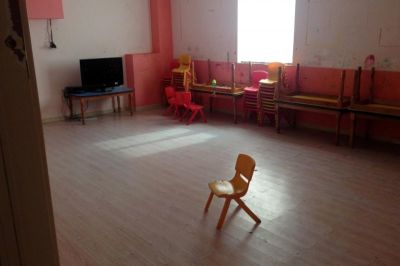
 church’s activities, according to China Aid, a U.S.-based group that exposes abuses, helps the persecuted and promotes religious freedom, human rights and rule of law. “Some (church leaders and members) have been required to speak to police and other officials. Others experienced illegal treatment.”
church’s activities, according to China Aid, a U.S.-based group that exposes abuses, helps the persecuted and promotes religious freedom, human rights and rule of law. “Some (church leaders and members) have been required to speak to police and other officials. Others experienced illegal treatment.” The Chinese government continued its campaign against Christianity during the country’s coronavirus outbreak by destroying crosses and demolishing a church while people were on lockdown.
The Chinese government continued its campaign against Christianity during the country’s coronavirus outbreak by destroying crosses and demolishing a church while people were on lockdown.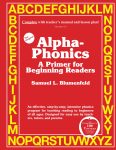




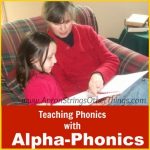 disadvantaged and minority kids who enter school without the background in common language and cultural understanding to thrive in this child-centered environment. “Possessing less knowledge of the print culture, they will not reliably understand the language of the classroom,” he says. Inevitably, the gap between disadvantaged students and their peers will then increase rather than decrease over time.
disadvantaged and minority kids who enter school without the background in common language and cultural understanding to thrive in this child-centered environment. “Possessing less knowledge of the print culture, they will not reliably understand the language of the classroom,” he says. Inevitably, the gap between disadvantaged students and their peers will then increase rather than decrease over time. obvious at least clarifies the challenge and opportunity for parents. And maybe the upending of the regular school year, a time when so many kids aren’t even allowed into their school buildings, will serve as an inflection point in our nation’s education history. The necessity for school choice is more obvious to more parents than ever before. And meanwhile, public education can no longer be taken for granted or left alone to fail our children for another generation. Parents have their best opportunity in decades to see behind the curtain of what has been happening at their kids’ school and decide for themselves whether or not to make a change. Hirsch certainly gives us a roadmap for where we should be headed. The challenge is taking up his cause and implementing it.
obvious at least clarifies the challenge and opportunity for parents. And maybe the upending of the regular school year, a time when so many kids aren’t even allowed into their school buildings, will serve as an inflection point in our nation’s education history. The necessity for school choice is more obvious to more parents than ever before. And meanwhile, public education can no longer be taken for granted or left alone to fail our children for another generation. Parents have their best opportunity in decades to see behind the curtain of what has been happening at their kids’ school and decide for themselves whether or not to make a change. Hirsch certainly gives us a roadmap for where we should be headed. The challenge is taking up his cause and implementing it.


 While Rochunga’s heart was with his people in India, he also was convinced that everyone, everywhere, should have the opportunity to read God’s Word. The Lord gave him a vision to provide Bibles in people’s heart languages across the globe, particularly where God’s Word was scarce or even completely unavailable. Bibles For The World (BFTW) was born in 1973 to be a catalyst for individual and cultural transformation through Christ and the power of God’s Word.
While Rochunga’s heart was with his people in India, he also was convinced that everyone, everywhere, should have the opportunity to read God’s Word. The Lord gave him a vision to provide Bibles in people’s heart languages across the globe, particularly where God’s Word was scarce or even completely unavailable. Bibles For The World (BFTW) was born in 1973 to be a catalyst for individual and cultural transformation through Christ and the power of God’s Word.
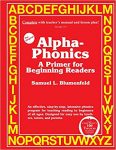 What has been the result? Across the 42 schools that Bibles For The World administers, more than 9,500 children and young people each year are able to enjoy a quality Christian education. That’s 42 villages, many, like Senvon, in very remote and difficult to reach regions where electricity and running water aren’t available — but Christ-centered education is impacting lives. BFTW’s schools and students perform exceptionally well in comparison to government run schools, receiving the highest marks for academic achievement. This despite many village schools that operate without electricity, running water, plumbing or, in many cases, desks for every student.
What has been the result? Across the 42 schools that Bibles For The World administers, more than 9,500 children and young people each year are able to enjoy a quality Christian education. That’s 42 villages, many, like Senvon, in very remote and difficult to reach regions where electricity and running water aren’t available — but Christ-centered education is impacting lives. BFTW’s schools and students perform exceptionally well in comparison to government run schools, receiving the highest marks for academic achievement. This despite many village schools that operate without electricity, running water, plumbing or, in many cases, desks for every student.

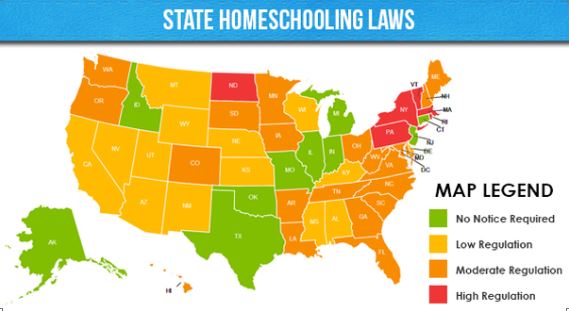

 however, please note that often a state will put guidelines into writing for the state that are not always carried and enforced at the local level. In the following chart, we’ve included what the state has listed in writing on that state’s DOE website. However, your local school district may or may not enforce these guidelines. This does tend to cause confusion, however, when in doubt give your local district a call. This is why it is important to understand what your state requires from you as a homeschooling family. Also, if there is ever an issue and you feel that your state or local school district is requiring something that they don’t need to there are homeschool legal defense associations that will step in and help you maintain your rights.
however, please note that often a state will put guidelines into writing for the state that are not always carried and enforced at the local level. In the following chart, we’ve included what the state has listed in writing on that state’s DOE website. However, your local school district may or may not enforce these guidelines. This does tend to cause confusion, however, when in doubt give your local district a call. This is why it is important to understand what your state requires from you as a homeschooling family. Also, if there is ever an issue and you feel that your state or local school district is requiring something that they don’t need to there are homeschool legal defense associations that will step in and help you maintain your rights.


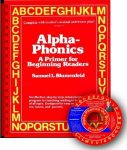 reading scores in 2019 were Alaska, New Mexico, Alabama, Texas, Mississippi, West Virginia, Oklahoma and Louisiana.
reading scores in 2019 were Alaska, New Mexico, Alabama, Texas, Mississippi, West Virginia, Oklahoma and Louisiana. any of these achievement levels in reading. They scored below NAEP Basic. That means they did not have even a “partial mastery of prerequisite knowledge and skills that are fundamental for proficient work” at that grade level.
any of these achievement levels in reading. They scored below NAEP Basic. That means they did not have even a “partial mastery of prerequisite knowledge and skills that are fundamental for proficient work” at that grade level.

 However, Farrar said she has sometimes felt overwhelmed by having her classes, teachers, activities, and social life all in the same place. Coming from an online education and few interactions with classmates, she said Harvard’s campus felt “surreal.”
However, Farrar said she has sometimes felt overwhelmed by having her classes, teachers, activities, and social life all in the same place. Coming from an online education and few interactions with classmates, she said Harvard’s campus felt “surreal.”
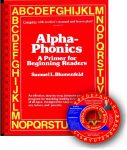 “I’m not used to having these chunks of the day where somebody else has decided for me what I should be doing with my time,” Farrar said. “I think time management has always been one of my assets just because it was organic. I had to tell myself to sit down and do my homework. Nobody told me to do it.”
“I’m not used to having these chunks of the day where somebody else has decided for me what I should be doing with my time,” Farrar said. “I think time management has always been one of my assets just because it was organic. I had to tell myself to sit down and do my homework. Nobody told me to do it.”

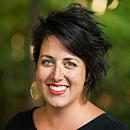





/https://public-media.si-cdn.com/filer/b2/93/b293391c-b7a2-4352-bc6e-a0f3d75a4e09/openluchtschool_in_de_vrieskou_open-air_school_in_the_freezing_cold_3915530627_1.jpg)


 Starting in the 2000s, the state of Texas began eliminating cursive from required school curriculums. Now,
Starting in the 2000s, the state of Texas began eliminating cursive from required school curriculums. Now,
 Here are five reasons why cursive is coming back to Texas and why other states are following the Lone Star State. Virginia Berninger, a professor at the University of Washington, told the
Here are five reasons why cursive is coming back to Texas and why other states are following the Lone Star State. Virginia Berninger, a professor at the University of Washington, told the improves. They are able to remember their notes and lessons better. An article in
improves. They are able to remember their notes and lessons better. An article in We still live in a society that requires some handwritten documents. Students who are able to write cursive grow into adults who can sign checks, mortgages, and other documents. They are also able to read cursive and recognize signatures. While many of these exchanges can be completed using digital signatures and forms, handwriting and unique signatures will likely remain important for drivers’ licenses and other official forms of identification.
We still live in a society that requires some handwritten documents. Students who are able to write cursive grow into adults who can sign checks, mortgages, and other documents. They are also able to read cursive and recognize signatures. While many of these exchanges can be completed using digital signatures and forms, handwriting and unique signatures will likely remain important for drivers’ licenses and other official forms of identification. Learning cursive in the classroom is a way to achieve two goals. Students learning calligraphy and handwriting are also participating in an ancient form of art. Some schools have cut back on art courses due to funding or curriculum priorities. Calligraphy and handwriting give students the opportunity to express themselves creatively while still learning a skill.
Learning cursive in the classroom is a way to achieve two goals. Students learning calligraphy and handwriting are also participating in an ancient form of art. Some schools have cut back on art courses due to funding or curriculum priorities. Calligraphy and handwriting give students the opportunity to express themselves creatively while still learning a skill. Texas’ cursive curriculum ends by fifth grade. By that time, experts believe that children will have learned cursive well enough to use it regularly. They also believe that children who have used cursive and calligraphy-style writing have benefited from improved eye-hand coordination, left-and-right-brain communication, improved learning and memory, and better language fluency.
Texas’ cursive curriculum ends by fifth grade. By that time, experts believe that children will have learned cursive well enough to use it regularly. They also believe that children who have used cursive and calligraphy-style writing have benefited from improved eye-hand coordination, left-and-right-brain communication, improved learning and memory, and better language fluency. with parents and teachers to introduce the curriculum. According to
with parents and teachers to introduce the curriculum. According to Alpha-Phonics
Alpha-Phonics The Alphabet Song!
The Alphabet Song! Water on the Floor
Water on the Floor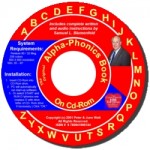 Alpha-Phonics the Book on CD Rom
Alpha-Phonics the Book on CD Rom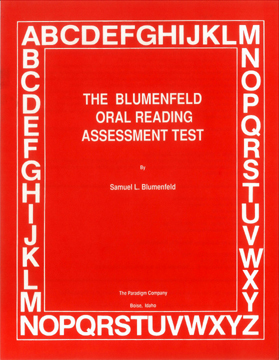 Blumenfeld Oral Reading Assessment Test
Blumenfeld Oral Reading Assessment Test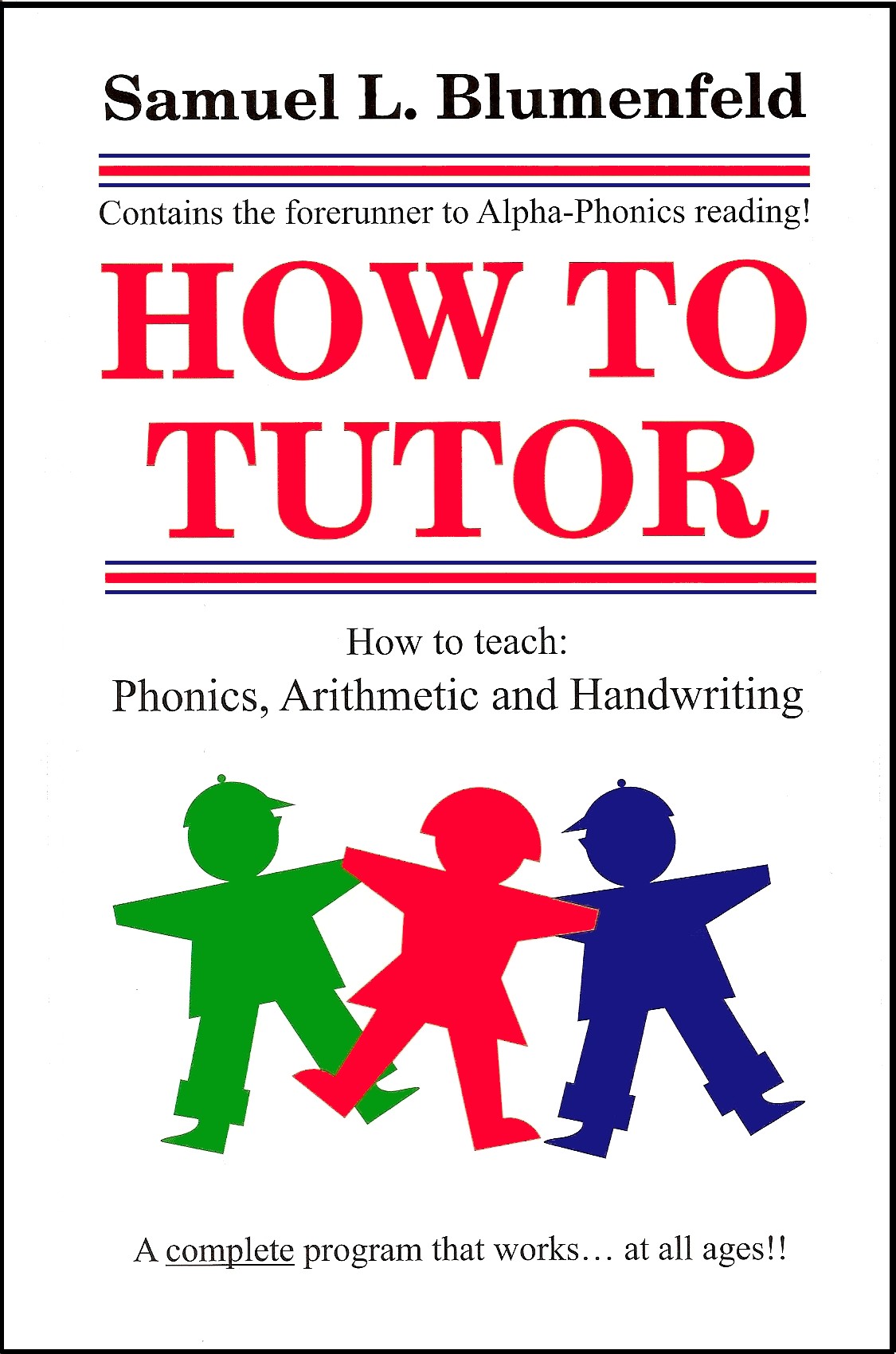 How To Tutor
How To Tutor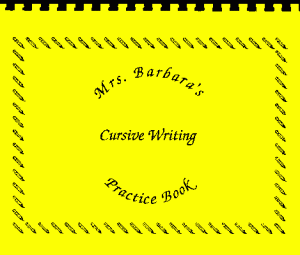 How To Tutor Cursive Handwriting Workbook
How To Tutor Cursive Handwriting Workbook
We hope Parents who desire to teach their own Children to read, will investigate how Alpha-Phonics* can easily be used to teach their children to read at any stage of their reading instruction. Your Kids can make a lot of headway in only a couple of weeks with this proven program. Alpha-Phonics is easy to teach, is always effective and requires no special training for the Parent. It works ! You CAN DO it !! Follow the links below to know all about the time-tested (37 + years) Alpha-Phonics program:
*Samuel Blumenfeld, author of Alpha-Phonics, was a firm believer in the necessity for children to learn cursive handwriting. In fact, he made a strong case that it should be taught first, ahead of non-cursive, or so called ball and stick we mostly use now.
WEBSITE TESTIMONIALS CATHY DUFFY REVIEW
OTHER REVIEWS AWARDS HOW TO ORDER